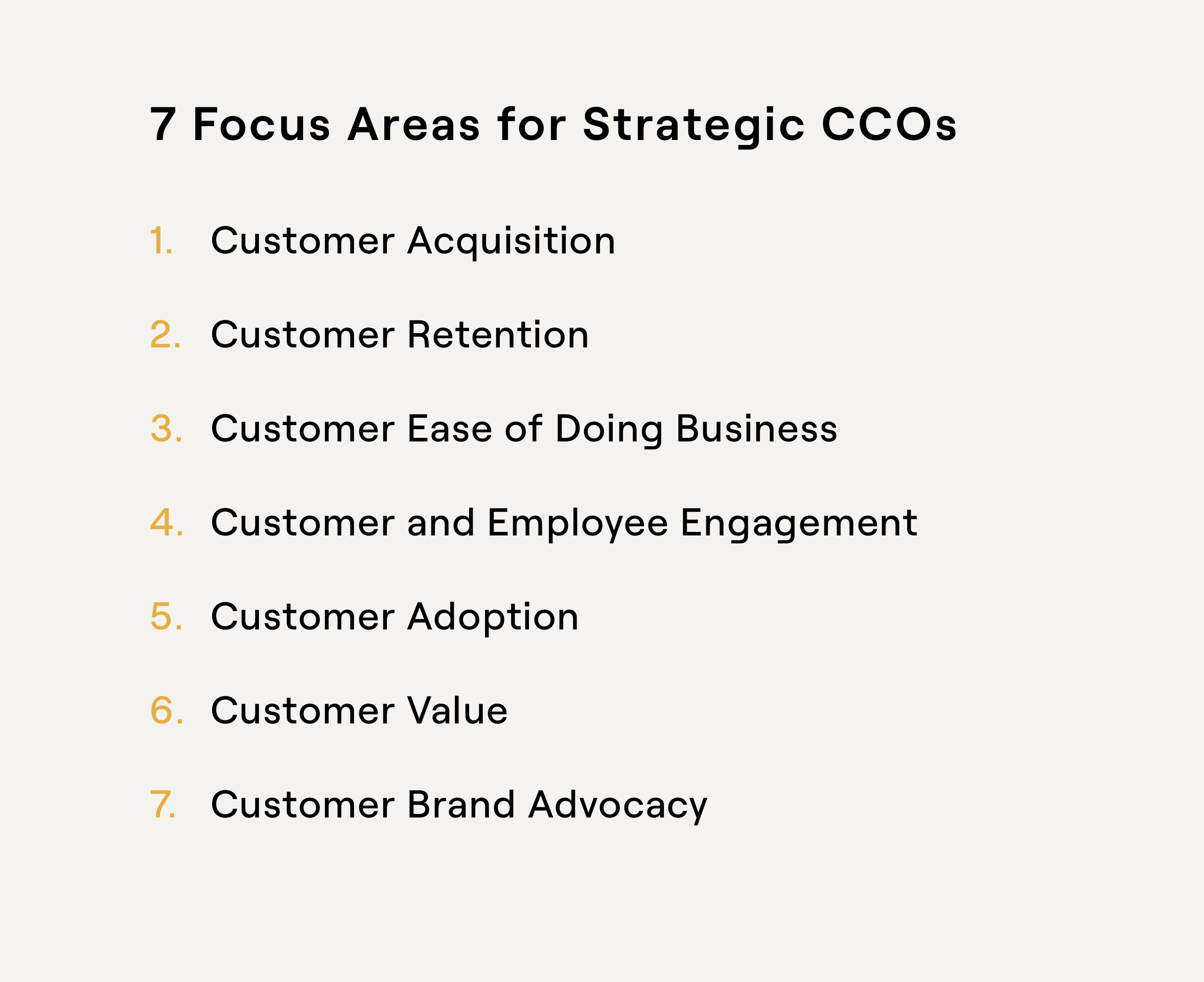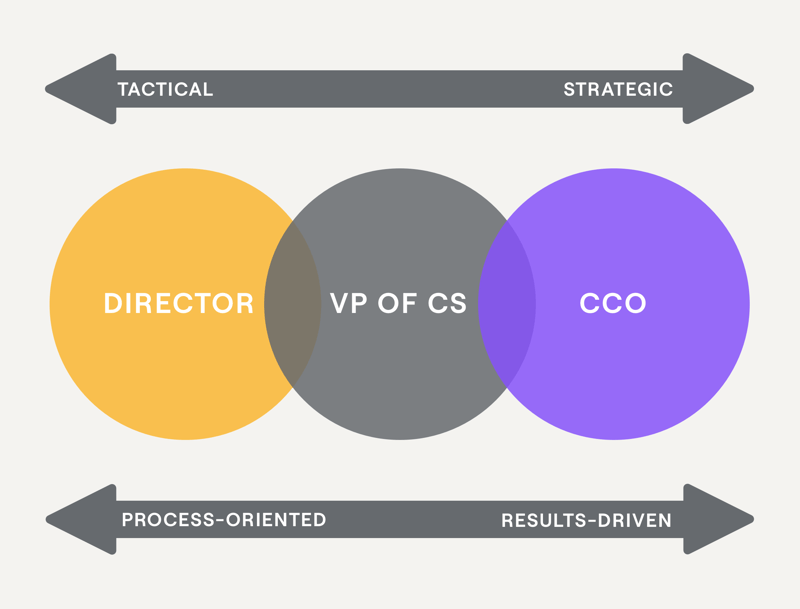This article is part of our 2.0 Leadership Series, where we provide practical insight into what strategic Chief Customer Officers are doing so the rest of us can level up more quickly.

It was 2008 when Jeb Dasteel was named Chief Customer Officer at Oracle, after leadership roles in Sales, Consulting, and Customer Programs at the company for 10 years. “I didn’t know a single other CCO at the time,” he recalls. “Everything we did, we had to make up as we went. Trial and error. We did some smart things and some dumb things, but by and large, we were successful and learned a lot along the way. I’m enormously proud of what my team accomplished.”
Jeb left Oracle in 2019 and now advises CCOs on how to refine their customer strategy. He notes that especially in the past two years, he’s impressed with the quality of modern CCOs — but CCOs and CS leaders broadly still have gaps to fill to become an established member of every executive team.

In this interview, Jeb gives his perspective on the role of the CCO in large organizations and working with enterprise companies. He offers a unique perspective on why too many CCOs fall into the trap of being too tactical, and shares advice for CS leaders looking to become more influential (and why helping Sales close deals is critical to that).
---------
Chris: VPs and CCOs at small and mid-sized companies often haven’t seen how their role would change at a larger company, but they want to be eligible for those positions. Can you talk about what a CCO at an enterprise company is responsible for?
Jeb: This is a difficult question to answer because a big challenge CCOs face is variation—on how they’re measured, what they are responsible for, and what Customer Success owns. Every company has a different formula for who they think a CCO should be and what they should do.
But what I’ve seen is that most CCOs who struggle at the enterprise level do so because they’re too tactical and process-oriented. They haven’t developed the strategic, long-term company and departmental vision required of top executives. CCOs who are too tactical have a tough time both engaging with their executive peers, and working through what their role entails versus the Sales or Marketing org.
A lot of CCOs get a bad reputation because they come in, there's no clear remit for them, there's no moment where they work with the CEO to carve out specific responsibilities and goals for the CCO to own. It just doesn't happen. So CCOs are left to figure it out by themselves, without the CCO aircover to get it done. I can understand why there's a constant land grab of trying to beg, steal, and borrow resources from other departments.
The CCO role needs to be simplified and streamlined. That’s why I often coach CCOs to consider 7 elements that in various combinations should define their role. I tell them to pick the areas that matter to the business but to be intentional about what they choose to own or not to own. And regardless of what a CCO chooses to be responsible for, the most important piece is that there is a model in place that they, and the company, can follow.
7 areas successful CCOs should focus on
Chris: Can you outline the 7 areas CCOs should consider when building out their role, and describe what it would look like in practice to focus on each element?
Jeb: Absolutely.

1. There’s Customer Acquisition, meaning bringing new customers on board.
A large part of the CCO’s job is to help the organization, team by team, rethink their job to strike the right balance between acquisition and retention. A few of the ways a CCO can drive acquisition are through market and customer segmentation, an onboarding process for new customers, and working across the organization on setting Service Level Objectives (SLOs). New customer acquisition is also heavily influenced by the CCO through customer marketing content.
Example metric: New logos or new customer count by geography, product pillar, etc.
2. Then there’s Customer Retention, or keeping customers.
- Feedback, analytics, reporting, and storytelling through Voice of Customer programs are key for this, as is issue resolution.
- There is also a customer communications and crisis management aspect that affects retention.
- Another thing to consider is service delivery. CCOs can help the services organization understand how service delivery is crucial in supporting product adoption and deployment, which in turn affects retention.
Example metric: Net Revenue Retention (NRR) or churn rate.
3. There’s also Customer Ease of Doing Business. The orchestration of all of the various aspects of customer care or success is heavily involved here, as is cross-LOB coordination of all other customer interactions. The CCO should play a heavy role in developing and standardizing account management practices and other things that have a big effect on customer effort or friction.
Examples of ease of doing business issues that come up, again and again, are contracting and billing, in addition to account management. Removing friction or unnecessary customer effort can literally change the lives of your customers at a personal level. Nobody wants to be embroiled in invoicing, day after day.
It should be the CCO’s role to work across the organization, including back-office functions, to help the organization understand how process complexity affects customers and how that, in turn, affects your own business metrics (meaning, if it takes forever to get through contract negotiation, your customers will be annoyed and less likely to continue to do business with you). The give and take on this is inherently between your desire to mitigate risk (which almost always creates complexity versus the value of making interactions easier and more accommodating to customers.
Example metric: Process cycle time reductions or customer feedback on satisfaction with specific interactions (contracting, billing, working with your account team, etc.).
4. There’s Customer *and Employee* Engagement, meaning how you systematically bring customers into specific programs that enrich the relationship between you and your customers and help them attain business outcomes through co-creating of value.
Also, getting your own executives more involved with customers is critical to developing empathy for customers and generally building important customer relationships outside of the day-to-day transactions and interactions.
Engagement program examples include:
- Account management
- Executive sponsorship
- Executive engagement
- Advisory councils
- Customer communities
- Solution architecture
- Support
- Change management
- Product adoption
- Beta (new product introduction) programs
Example metric: We experimented at Oracle with an engagement index, wherein we identified specific programs and then simply looked at the top customer segments and counted the programs that each customer was engaged in. This worked well, was a good leading indicator, and was pretty easy to implement.
*Note: Employee engagement drives customer engagement and customer engagement drives pretty much everything else, ranging from retention, to adoption, to value realization, to advocacy.
5. Customer Adoption is helping customers progressively increase the use of your products and/or services and increase the uptake on product updates.
Customer Success programs are generally organized around those objectives. Also, cross-sell and upsell efforts contribute. I further propose that the CCO contributes to or drives the development of sales enablement tools and programs, which in turn affect customer product adoption (and all of the other things mentioned earlier).
Example metric: Speed of product adoption from whatever starting point you choose: when the deal is signed or when the customer goes live with the product (from a technology example). This is generally the percentage of the addressable customer employee population who is using the product over time. Same thing for how quickly product updates are consumed.
6. There’s also Customer Value, which is all about targeting, tracking, and measuring the value that the customer realizes in buying and using/deploying your products.
- Targeting means helping customers build the business case for buying your product.
- Tracking is the incremental measurement of progress through deployment (or implementation) of the product.
- Measuring is the documentation of return on investment your products create when those products are in use.
Example metric: The net financial benefit (e.g., cost-saving or net-new revenue) created by a customer or a sample of customers by whatever segment you choose - geography, product category, functional domain, etc. In a B2C environment, this would probably be more about tracking sentiment.
“When you can show customers that they attained their desired business outcomes, they will stand in line to advocate for you. Full stop.”
7. Finally, CCOs should consider Customer Brand Advocacy—essentially customer references but done in a highly proactive way. It’s the CCO’s job to develop and execute brand advocacy by proactively identifying and developing the most impactful customer brands that will contribute to the value of your own brand. When these brands are identified you can then develop an engagement plan that systematically helps the customers to be successful, meaning getting them to achieve measurable business outcomes. And when you can show customers that they attained their desired business outcomes, they will stand in line to advocate for you. Full stop.
Example metric: Pick the ideal 100 customers whose brands would make the biggest impact on the value of your brand. Then measure over time when each customer becomes an active brand advocate and how long it took to get them to that state. That is the quantity-oriented measure; a more quality-oriented measure is to look at exactly how each customer is advocating for you (e.g., helping you sell; doing advertising for you; speaking at conferences for you; advocating in peer-to-peer settings). You can also look at what advocates are doing proactively (without you asking) versus what they do when called upon.
CCOs need to avoid being tactical
Chris: How can a CS leader know if they’re too tactical and not strategic enough? Are there any common pitfalls that would reveal a leader is being too tactical?
Jeb: There are two dimensions here. There's tactical versus strategic and process versus results. I think you're too tactical if you're more process-oriented than you are results-oriented. And the symptom that reveals being too process-oriented is that you're not focused on the results for your own organization by focusing on your customer's results.

To me, there are two litmus tests to understand if you are an effective CS leader:
1) Whether you are actively engaged with the Sales organization to drive business.
2) Whether the customer feedback being collected and analyzed is being actioned upon, with tangible results that correspond to measurable business outcomes for your customers and for you.
If it's a “no” to either of those two, if for example, feedback is just fodder for interesting conversation, it’s a complete waste of time. Actually, it’s worse than a waste of time—it's counterproductive. You will be labeled as a person who does some “interesting stuff,” but never delivers any real outcomes or results. I’m all in for philosophies and theories on Customer Success, but at the end of the day, it has to yield something tangible for your two most important stakeholders: your customers and your company.
Build influence by helping Sales close deals
Chris: How can a CCO level up their influence on the executive team?
Jeb: I found that the single best thing to do to be influential as a CCO was to build street cred—particularly with Sales and Engineering. And building street cred meant getting engaged with deals. I would not have been successful at Oracle doing anything as a CCO had I not actively engaged with the Sales organization to close deals.
Every CS leader should spend a significant part of their day being an executive sponsor for important accounts and being actively involved in deals. We have a responsibility to help drive revenue for the company.
If your job is mostly about doing journey mapping (which by the way is emblematic of focusing on the minutiae of process improvements when the customer can generally tell you beforehand exactly what’s broken), I just don't think that you'll be able to make a real impact on the business and you won't be taken seriously as a real strategic leader. Journey mapping has its place, but every single organization I have worked with actually has a good handle on what’s working and what’s not working. The trick is to speak with the right employees and the right customers to validate this, maybe do some very targeted process assessment, and then move quickly into fixing the problem. Fast results will trump the most attractive process diagram every day of the week.
Chris: That might be the best advice I've heard in a month, which is if you want to drive influence at the executive level, help close the deals.
Jeb: Exactly. Get off your ass and get on an airplane. And I'll tell you what, this was by far the most rewarding part of my job. After essentially 100% of Oracle's products became available as a cloud service and we had CHROs, CMOs, and CFOs as customers, the principal person I worked with for 21 years when I was at Oracle was the customer’s CIO. If I knew 100 CIOs around the world, I always felt a responsibility to maintain those relationships, advocate for those customers, and help drive business because of those relationships. And, by the way, if those 100 customers called me with a problem, the whole Oracle organization kicked into gear. That wasn’t my doing; it was part of the fabric of the company to do this.
"There's literally no substitute for engaging with customers."
So I made it my job, and I know this term dates me, to be the human Rolodex for the top 100 CIOs globally. Because my job was to know them and have a relationship with them so I could call them up and have a conversation. There were so many times when a rep would say, “Hey, can you call this CIO? I don’t have that kind of relationship with them.” And I would become an executive sponsor for many of those customers.
Now, I couldn’t be an executive sponsor for every account, but I could get on airplanes four or five days a week, cover a lot of area, and be a valuable resource by putting myself and my team in the position of doing a warm handoff and setting the relationship up for success.
I believe every CCO should operate that way. There's literally no substitute for engaging with customers.

If you liked this post, you'll probably like our weekly newsletter for Customer Success leaders.
